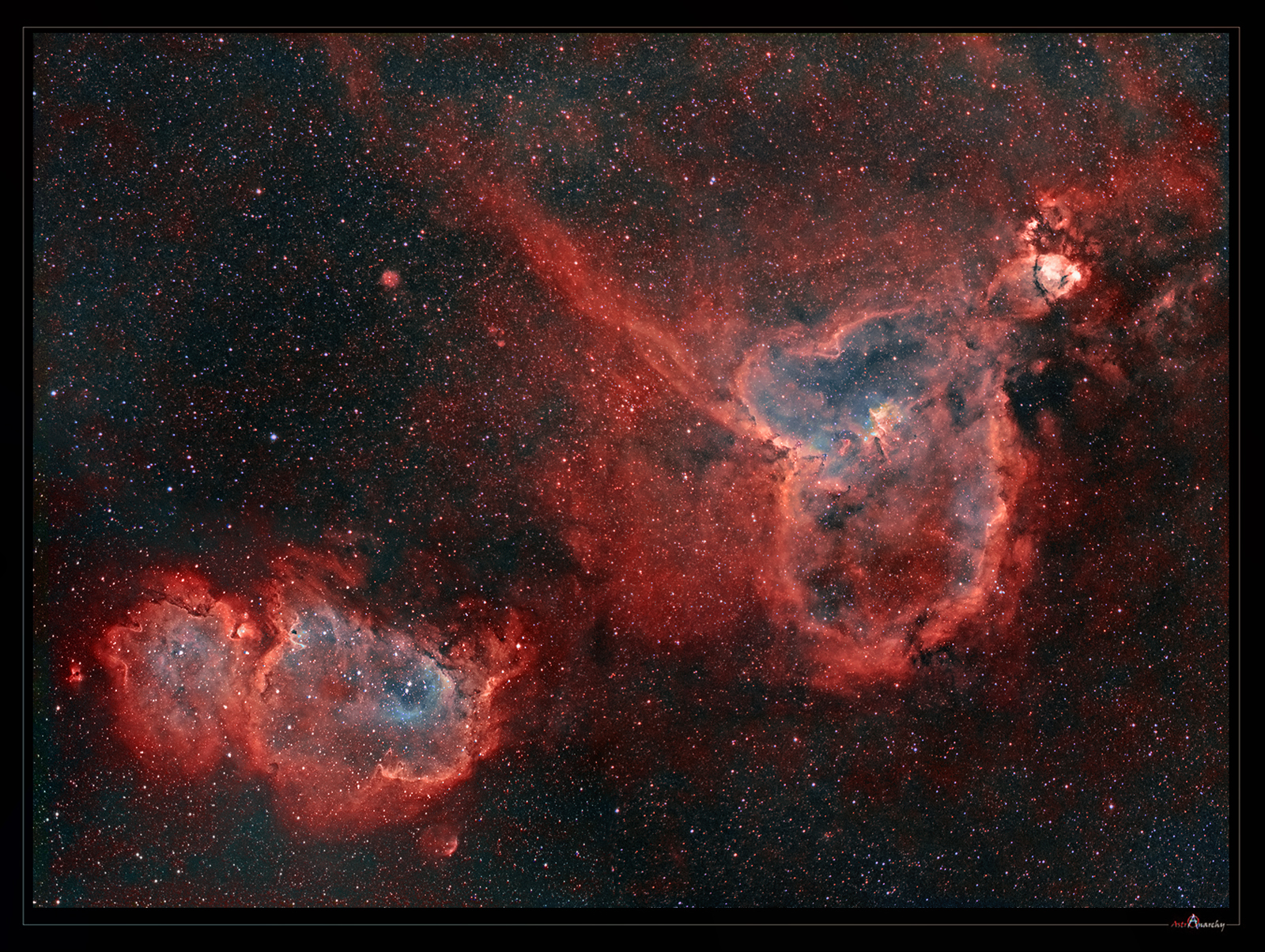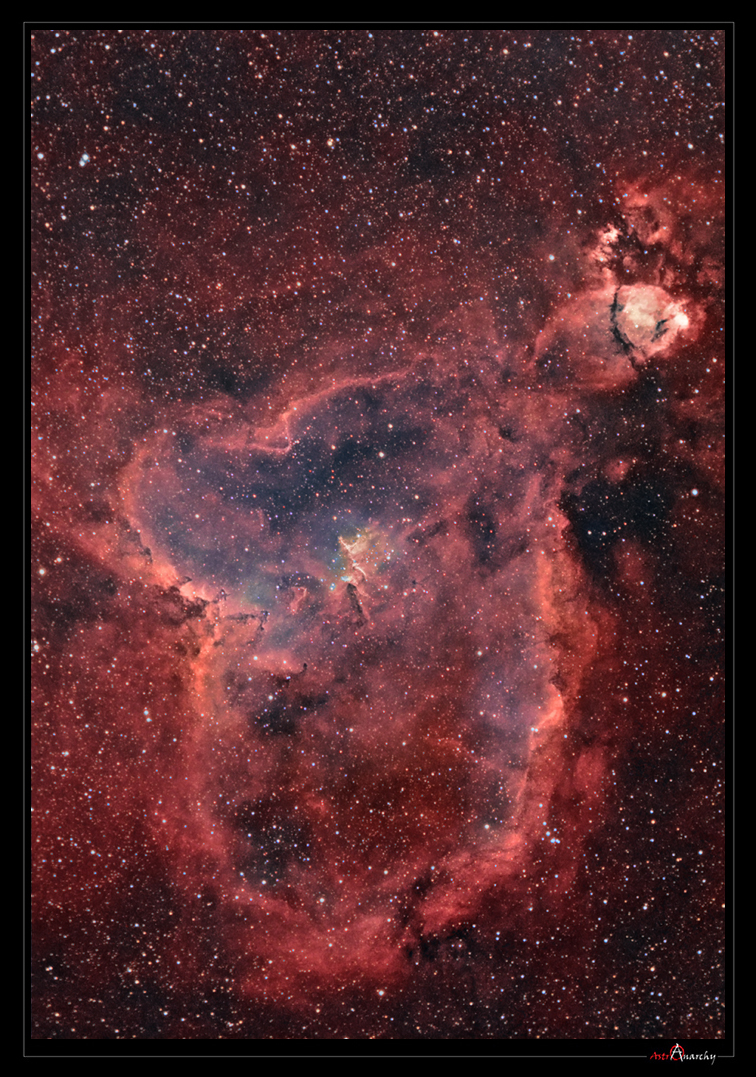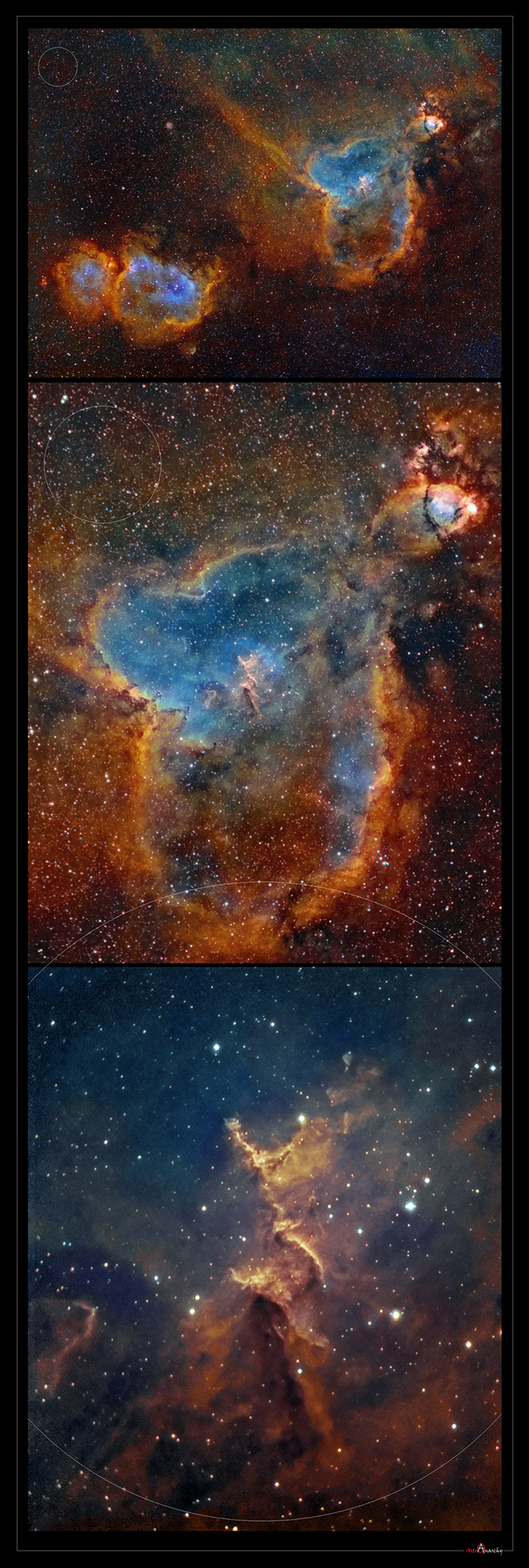Since my processing technique gets better and the time of year doesn't give any support, I have reprocessed some older images. There is now star colors added and other processing is tweaked too.
Wide field shot of IC1805 with the "Soull Nebula", IC1848
HST-palette, (HST=Hubble Space Telescope)
from the emission of ionized elements, R=Sulfur, G=Hydrogen and B=Oxygen.
Natural color composition from the emission of ionized elements, R=80%Hydrogen+20%Sulfur, G=100%Oxygen and B=85%Oxygen+15%Hydrogen to compensate otherwise missing H-beta emission. This composition is very close to a visual spectrum.
IC 1805, Sharpless 190 (Sh2-190) in Cassiopeia
Ra 02h 32m 36s Dec +61° 29′ 2″
HST-palette, (HST=Hubble Space Telescope)
from the emission of ionized elements, R=Sulfur, G=Hydrogen and B=Oxygen.
The "Heart Nebula", IC1805 locates about 7500 light years away in constellation Cassiopeia. This is an emission nebula showing glow of ionized elements in a gas cloud and some darker dust lanes.
In a very center of the nebula, lays Melotte 15, it contains few very bright stars, nearly 50 times mass of our Sun, and many dim ones. The solar wind, a radiation pressure, from massive stars makes the gas twist to a various shapes.
Natural color composition from the emission of ionized elements, R=80%Hydrogen+20%Sulfur, G=100%Oxygen and B=85%Oxygen+15%Hydrogen to compensate otherwise missing H-beta emission. This composition is very close to a visual spectrum.
The "Heart of the Heart, Melotte 15
HST-palette, (HST=Hubble Space Telescope)
from the emission of ionized elements, R=Sulfur, G=Hydrogen and B=Oxygen.
Natural color composition from the emission of ionized elements, R=80%Hydrogen+20%Sulfur, G=100%Oxygen and B=85%Oxygen+15%Hydrogen to compensate otherwise missing H-beta emission. This composition is very close to a visual spectrum.
The scale in a sky, a zoom in series
NOTE. The size of the full Moon (0,5 degrees) is marked as a gray circle in all of the images.
Images used in the series above from top to bottom
A wide field image from 2008. with a Canon FD 200mm f2.8 camera lens and a QHY8, a cooled astronomical camera with a H-alpha and UHC-s filters. Total exposure time ~2,5h
A wide field image of the area, covering about 5 degrees, ~300', of the sky. (Ten full Moons side by side)
IC 1805, the "Heart Nebula", locates at upper Right and IC 1848 can be seen at lower Left. Image is shot with a Canon EF 200mm f1.8 camera lens and a QHY9, a cooled astronomical camera.
Baader narrowband filter set, total exposure time was ~1,5 hours (A very fast lens was used!).
A medium wide field shot with a Sky Watcher 80ED f7.5 telescope and QHY8 astronomical camera + UHC-s filter. Total exposure time ~3,5h
Last image was shot with a Meade LX200 GPS 12" telescope @ f6,5 and a QHY8, a cooled astronomical camera with a H-alpha and UHC-s filters. Total exposure time ~7h.
Technical details
Images above are reprocessed from my older material. Original images used can be seen here:
and here:
I have used some material from my wider field images for colors and some dimmer details.







0 comments:
Post a Comment